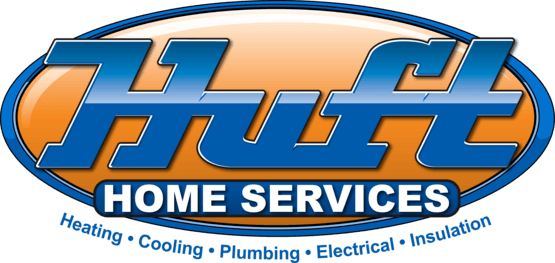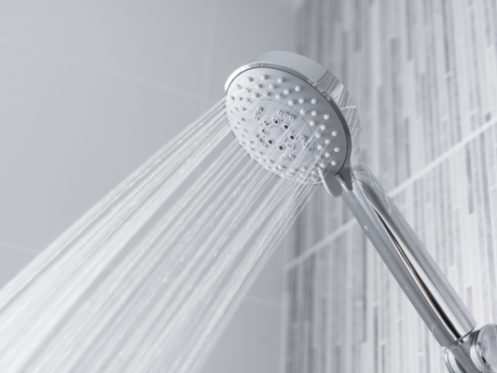If you’ve ever experienced low water pressure, you know how frustrating it can be. Not having enough water at home or work can make even the simplest tasks more difficult. But what do you do if you’re experiencing low water pressure?
1. Check the Main Water Valve to Make Sure It’s Turned On
When you notice low water pressure, check if your main water valve is turned on. This valve, usually located near the water meter or where the main water line enters your home, controls the water flow. If this valve is turned off, even partially, it can cause low water pressure throughout your home.
2. Check for Leaks
A leak in your home’s plumbing can also cause low water pressure. Even small leaks can cause low water pressure. To check for leaks, look at all the exposed pipes in your home and check for any drips or puddles. You should also check your water bill to see if it’s higher than usual; this could signify a leak.
3. Check the Pressure Regulator
If you’re served by municipal water, there could be an issue with the pressure regulator. This device is designed to regulate the pressure of the water coming into your home, but if it’s not working properly, you’ll experience low water pressure. Contact your local water utility company to have them check the pressure regulator and make any necessary adjustments.
4. Check for Frozen Pipes
If you’re in a cold area, frozen pipes could cause your low water pressure. The frozen water expands, causing cracks and breaks in your pipes. This can lead to a loss of water pressure or even a complete loss of water.
Check for frozen pipes. If the water pressure returns to normal after the pipes have thawed, then you know the problem is with the frozen pipes. There may be a bigger problem if there’s still low water pressure after the pipes have thawed.
5. Flush All the Faucets in Your House to Clear Out Sediment
How often have you turned on a house faucet, only to be greeted by a blast of rusty water? If your water looks less than clear, it may be time to give your pipes a good flush. Flushing all the faucets in your house is an easy way to clear out any built-up sediment or debris that may be clogging up your pipes. Turn on all the faucets in your house and let them run for a few minutes.
You may notice that the water starts to run clearer after a minute. Once all the faucets have been turned on, let them run for another few minutes before turning them off. This will help ensure that any residual sediment is flushed out of your system. Flushing all the faucets in your house is a quick and easy way to keep your pipes clear and ensure you always have access to clean, fresh water.
6. Make Sure None of Your Appliances or Fixtures Are Using Too Much Water
Did you know that your appliances and fixtures can impact your water pressure? If you have a lot of appliances or fixtures that use a lot of water, it can decrease the water pressure in your home. This is because less water is available to each fixture when they are all in use.
So, if you want to confirm that your water pressure is good, ensure none of your appliances or fixtures are using too much water. You can do this by ensuring they are all properly maintained and using low-flow fixtures where possible.
7. Check the Pressure Gauge on Your Water Heater
Your water heater has a pressure gauge that helps regulate the tank’s water pressure. If the pressure gets high, it can cause the tank to burst, leading to costly repairs. On the other hand, if the pressure is too low, it can reduce the flow of hot water and lead to lukewarm showers.
So, what’s the ideal water pressure for a water heater? Most experts recommend keeping the pressure between 20 and 30 PSI. If your gauge falls below 20 PSI, you may need to increase the temperature setting on your water heater. This will help raise the pressure and restore optimal hot water flow.
If you’re not sure how to adjust the pressure on your water heater, or if you think the pressure gauge is broken, contact a professional for help.
8. If You Have a Well, Check to See if the Pump Is Working Properly
Check your well pump regularly to make sure it’s in good working condition. You can do a few things to check the pump yourself or hire a professional to do it for you. If the pump produces strange noises or seems to be working harder than usual, that signals something is wrong.
Get to know the pressure gauge to ensure the pump operates at the correct pressure. If the pressure is too low, that can indicate that the pump cannot draw enough water from the well. If you’re unsure about checking your well pump, it’s best to contact a professional for assistance.
9. Contact a Professional Plumber
Some common plumbing issues are clogged drains. Clogs are due to a buildup of hair, soap scum, or even small objects, such as jewelry. If the drains are beginning to back up, it’s important to take action immediately. Left unchecked, a clog can quickly lead to a sewage backup, which can cause extensive damage to the system and potentially pose a health hazard.
Contacting a professional plumber is the best way to deal with a clog. Plumbers have the tools and expertise to diagnose and fix the issue quickly. In most cases, they will be able to clear the blockage without having to replace any of your plumbing fixtures. So, if your water pressure is low, don’t hesitate to call a professional.
10. Flush Your Toilets and Run All of Your Faucets
To help boost your water pressure and get better water flow in no time, try flushing your toilets and running all of your faucets for a few minutes; this will help clear any blockages and get everything flowing properly again.
If that doesn’t work, let a plumber from a reputable company like Huft Home Services look at your pipes and see what can be done.
11. Check the Size of Your Pipes
If your pipes are small, they won’t handle a high volume of water. This leads to low water pressure and issues with your plumbing system. Get a professional to take a look to ensure that your pipes are the right size for your home. They’ll recommend the best size for your needs and make sure your plumbing system is up to code.
If you’re experiencing low water pressure, don’t worry – Huft Home Services is here to help. We can get your water pressure back up to where it should be in no time. Call us today; we’ll help you get back to normal! We also are experts in repairs and installation of cooling systems, heating systems and electrical installations. We serve Sacramento County and the surrounding areas.



